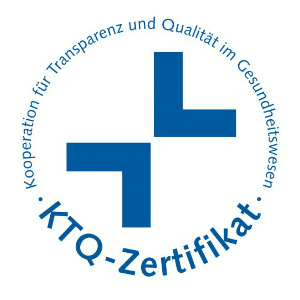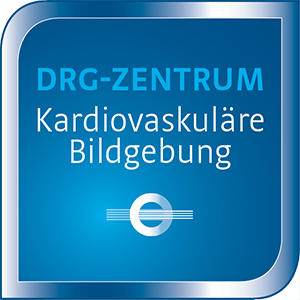Check-up
Our check-up packages can clarify organ complexes or comprehensive questions using several exam modalities as needed. Individual combinations are always possible, of course. Ask us or your primary care physician what would make sense for you.
Check-up Oncology
Full-body MRT
Typical Indications
- Imaging of the entire body
- Tumor diagnostics
- Vascular diagnostics of the entire body
The full-body MRT allows us to image the entire body, that is, all organs, the skeletal system, the spinal column, the vascular system, and the joints. The exam does not replace a dedicated exam of a part of the body, joint, or organ. The exam is primarily used for early detection of cancers. Depending on age and genetic or individual predisposition, other questions such as potential constriction of the arteries can also be clarified. The full-body MRT does not replace gastroscopy or colonoscopy. Please always clarify in advance whether your insurer will cover at least part of the cost of the examination.
The process does not use any X-ray radiation. Please always clarify in advance whether your insurer will cover at least part of the cost of the examination.
Low-dose pulmonary CT
Typical Indications
- Ruling out tumors in the lungs
- Pulmonary inflammation
- Pulmonary embolism
The low-dose pulmonary CT exam is performed in close cooperation with our registered colleagues, particularly pneumologists, and can supplement their exams. Lung cancer in particular can be diagnosed very gently and reliably using so-called low-dose computed tomography. When true details are needed, however, such as before therapy, a “normal” CT of the lungs is typically still needed, because the image resolution is then more detailed than for a low-dose CT. Using the extremely low-dose, top-class CT available to our patients, however, the radiation load is still very low, even in this case. Click here to learn more about our high-end spiral CT …
Using cutting-edge technology, tumors just a few millimeters in diameter can be discovered.
The procedure is therefore very suitable as an early detection measure for patients with increased risk of lung cancer (e.g., heavy smokers). In addition to its application as an early detection method for lung cancer, we also use low-dose pulmonary CT to clarify diseases that relate solely to the lungs (e.g., asbestosis, sarcoidosis) and for tumor searches in high-risk patients.
Advantages and disadvantages of early lung cancer detection using computed tomography
- Low-dose CT using multilayer technology is currently the most sensitive method for early lung cancer detection.
- Low-dose CT increases the chance of recovery, as lung cancer tumors can be detected at very early stages.
- With low-dose pulmonary DT, lung cancer tumors that are “hidden” behind vessels and crests in the diaphragm can also be detected. The conventional methods do not register such tumors.
- Using the computer-aided analysis that we perform as a standard on the CT data, the volume of a tumor can be measured precisely and the slightest change in size can be detected. A CT progression exam every three to six months can be used to differentiate benign tissue changes from malignant ones without a doubt, due to the lack of change in size.
- The introduction of new detector systems allow lung exams to be performed on modern CT equipment with a very low radiation dose. Using multilayer CT technology with the SIEMENS Edge, the radiation exposure is just a fraction of the original CT exams.
The process uses a low dose of X-ray radiation and may be performed only by a radiologist.
Possibly Virtual colonoscopy
Typical Indications
- Non-invasive imaging of the large intestine
- Detecting polyps and tumors in the colon
The virtual colonoscopy, also known as CT colonography, is performed in close cooperation with our registered colleagues, particularly gastroenterologists, and can be a supplement to their exams. Tumors and colon polyps as small as 6 mm can be detected early using this procedure.
For special cases, the virtual colonoscopy can be a supplement to the gastroscopy or colonoscopy (gastrointestinal exam) performed by the gastroenterologist. Examples include impassibility of a segment of the colon for the endoscope, or explicit refusal of an endoscope. The virtual colonoscopy does not eliminate the need for purgative measures.
For a virtual colonoscopy, no endoscope needs to be inserted into the interior of the colon. The “trip” through the large intestine is instead “simulated” on the computer monitor. Any polyps cannot be removed and further analyzed, unlike conventional colonoscopy.
Based on previous findings, the method has similar reliability to conventional colonoscopy for finding colon polyps or colon cancer in sizes of above 6 millimeters.
Preparation: purgative measures similar to colonoscopy.
Advantages and disadvantages of virtual colonoscopy
- For a virtual colonoscopy, no endoscope needs to be inserted into the interior of the colon.
- The CT colonoscopy does not cause any pain or require any sedative.
- The physician cannot remove any tissue samples (biopsies) during the exam. If changes in the colon are suspected, therefore, a normal colonoscopy must always be performed in addition.
The process uses a low dose of X-ray radiation and may be performed only by a radiologist. Please always clarify in advance whether your insurer will cover at least part of the cost of the examination.
MRI mammography
Typical indications
- Post status mastacarcinoma, second carcinoma
Examination of the female breast using MRT can be not only a supplement, but an alternative to X-ray mammography for some women. It can help to clarify certain questions that may have remained open from the mammography and other examination methods for the female breast. The exam should be performed only between days 6-12 after the first day of the period. In the second half of the cycle, the mammary gland tissue changes due to the increased influence of progesterone. This means that the healthy gland tissue also absorbs contrast agent and can no longer be reliably differentiated from diseased tissue.
MRI mammography is used, for example, to precisely examine breast cancer patients before surgery. Post-treatment of patients who have already had breast surgery or breast implants also makes use of MRI mammography. This method supplements conventional X-ray mammography, especially in women with dense tissue structures.
MRI mammography has very high sensitivity for detecting breast tumors that are already growing invasively. Magnetic resonance tomography alone cannot always distinguish benign tumors from malignant ones or from breast cancer precursors (carcinoma in situ). The MRI mammography exam is performed in close cooperation with our registered colleagues, particularly gynecologists, and can supplement their exams.
For whom is this exam suitable?
- For women who have detected changes in breast tissue (such as a palpation finding or abnormalities in X-ray or ultrasound exams). The MRI scan of the breast can also provide information on whether changes to the breast are benign or malignant if the usual early detection exams, such as mammography (X-ray) and ultrasound do not provide reliable evaluation.
- For patients with breast cancer, as an exam prior to surgery in order to rule out additional tumors and plan the surgical procedure. If chemotherapy is needed prior to surgery, its progress and effectiveness can be checked.
- For breast cancer patients in follow-up care, in order to rule out scar relapse (new tumor growth on the scar) with high reliability.
- For women with breast implants (e.g., made of silicone): the implants can interfere with conventional mammography diagnostics (the implant obscures large areas of the gland tissue). The seating and integrity of the implants can also be checked.
- For patients who cannot or do not wish to use X-ray mammography for breast cancer prevention for certain reasons: For example, young women with a family history of frequent breast cancer illness and who require regular early detection screening starting at age 30.
The process does not use any X-ray radiation. Please always clarify in advance whether your insurer will cover at least part of the cost of the examination.
Possibly Prostate MRI
Typical indications
- Suspicion of prostate carcinoma
The MR prostate exam is performed in close cooperation with our registered colleagues, particularly urologists, and can supplement their exams. Examination of the prostate using MRT is a modern diagnostic method in the fight against prostate carcinoma. The method combines various advantages: the organ to be examined can be depicted in different tissue layers. Modern, multiparametric MRI methods using PI-RADS (Prostate Imaging-Reporting and Data System), functional methods can be used along with anatomical MRT methods for decision-making. It is important to find the most aggressive portion of the tumor (index lesion), as this will determine the therapy. In many cases, this requires an MRT of the prostate using PI-RADS. A biopsy planned by our colleagues in urology can be performed more accurately in many cases. The prostate MRI exam using PI-RADS is currently the best option for imaging a prostate carcinoma. This is often, but not always, successful. The Radiology Baden-Baden practice has many years of expertise in the field of MR prostate imaging.
The process does not use any X-ray radiation. Please always clarify in advance whether your insurer will cover at least part of the cost of the examination.
For whom is this exam particularly suitable?
- For men who had a benign finding from a tissue sample (punch biopsy) after elevated PSA was detected, but whose PSA value continues to rise (prostate MRT before second punch biopsy)
- For men who have already had histological confirmation of prostate carcinoma, as an additional decision-making tool for therapeutic decisions (e.g., surgery, radiation, hormone therapy?)
- If the PSA value increases again after surgical removal of the prostate—question: local relapse? Lymph node enlargement in the pelvic region? This sectioned image method is preferred by many radiation institutions for radiation therapy.
Check-up Heart
Cardio-CT
Typical Indications
- Establishing CHD (coronary heart disease), coronary artery constriction
- Establishing coronary artery calcification
- Checking stents and bypasses
The cardio CT exam is performed in close cooperation with our registered colleagues, particularly cardiologists, and can supplement their exams. The coronary angiography CT or cardio CT is performed to rule out constriction of the coronary arteries for a constellation of risks or abnormal complaints. The passability of coronary artery bypass vessels can also be reliably established. The coronary arteries are imaged using CT coronary angiography without a catheter needing to be inserted through the groin.
Things to know about the coronary angiography CT radiation dose
Like the heart catheter exam, X-rays are used for CT coronary angiography, that is, the exam is associated with a dose of radiation. The radiation does varies depending on the problem. The Radiology Baden-Baden practice has the SIEMENS Edge, a 128-line top-class spiral CT that is very fast in order to produce clear, focused images of the beating heart, while remaining very low in radiation. With coronary angiography CT, in many cases a radiation dose of below 1 mSv can be achieved. This dose is significantly lower than the typical dose for a heart catheter—but, of course, if therapy is required then a direct intervention can only be performed via a heart catheter. This means that the radiation load is significantly lower than that which everyone is exposed to from the environment, year after year (approx. 2.5 mSv per year). Click here to learn more about our high-end spiral CT …
Preparation: avoid caffeinated beverages on the day of the examination, and do not take any erectile dysfunction medications (e.g., Viagra) for 24 hours prior to the examination. Click here to learn more about what to look for with cardio CT …
For whom is this exam suitable?
- For patients with so-called “average or low pre-test probability” of the presence of coronary heart disease (CHD), that is, if the probability of coronary artery constriction requiring treatment is rather low—but it cannot be ruled out entirely. Please speak with us about the question of whether you need CT coronary angiography.
- For patients after aortocoronal bypass operations. In order to evaluate the condition of the bypass vessels, the CT coronary angiography is now an equivalent alternative to a heart catheter exam.
- For patients in whom the passability of a coronary artery must be checked after implantation of stents (blood vessel supports).
Advantages of CT coronary angiography
- Unlike heart catheter exams, no catheter needs to be inserted into the artery.
- The exam is much faster and uses less radiation than a heart catheter exam.
- “White plaque” that has not yet caused constriction of the coronary arteries can only be detected via CT coronary angiography.
The process uses a low dose of X-ray radiation and may be performed only by a radiologist. Please always clarify in advance whether your insurer will cover at least part of the cost of the examination.
Cardiology-MRI
Typical indications
- Coronary heart disease (CHD), angina pectoris pain
- Status post heart attack, determining infarct size
- Heart function and heart pumping function after disease
- Heart muscle diseases and inflammation
- Congenital heart defects in childhood and adulthood
- Acquired valve defects
- Blood clots (thrombosis) or tumors in the heart.
The cardio MRT exam is performed in close cooperation with our registered colleagues, particularly cardiologists, and can supplement their exams. Due to rapid technological and scientific advancement, cardio MRT is currently an established method for clarifying various heart diseases and the risk of a heart attack. Cardio MRT is generally recognized as the most accurate method for measuring heart size and function, particularly for CHD. It is also the most accurate method for determining the size of a past cardiac infarction. Using a medication, the blood supply and pumping function under load can be reliably depicted, so that statements can be made not only about an infarction that has occurred, but also about areas of the heart that are at risk and need therapy. The process does not use any X-ray radiation at all. Please note the sometimes specific contraindications, particularly for cardiac imaging. Click here to learn more about contraindications for MRT, especially cardio MRT … Please always clarify in advance whether your insurer will cover at least part of the cost of the examination.
Preparation: avoid caffeinated beverages on the day of the examination, and do not take any erectile dysfunction medications (e.g., Viagra) for 24 hours prior to the examination.
The Radiology Baden-Baden practice has many years of expertise in the field of cardio MRT and works together closely with regional cardiologists and heart centers.. Click here to learn more about certificates held by Radiology Baden-Baden … A cardiologist is directly on hand for the exam, in addition to the radiologist, so that the exam can be individually optimized for the patient. The medical association has approved the cooperative effort as one of the few outpatient centers in Germany.
Click here to learn more about cardiac diagnostics at Baden-Baden …
Possibly Full-body MRI
Typical Indications
- Imaging of the entire body
- Tumor diagnostics
- Vascular diagnostics of the entire body
The full-body MRT allows us to image the entire body, that is, all organs, the skeletal system, the spinal column, the vascular system, and the joints. The exam does not replace a dedicated exam of a part of the body, joint, or organ. The exam is primarily used for early detection of cancers. Depending on age and genetic or individual predisposition, other questions such as potential constriction of the arteries can also be clarified. The full-body MRT does not replace gastroscopy or colonoscopy. Please always clarify in advance whether your insurer will cover at least part of the cost of the examination.
The process does not use any X-ray radiation. Please always clarify in advance whether your insurer will cover at least part of the cost of the examination.
Check-up Mamma
MRI mammography
Typical indications
- Post status mastacarcinoma, second carcinoma
Examination of the female breast using MRT can be not only a supplement, but an alternative to X-ray mammography for some women. It can help to clarify certain questions that may have remained open from the mammography and other examination methods for the female breast. The exam should be performed only between days 6-12 after the first day of the period. In the second half of the cycle, the mammary gland tissue changes due to the increased influence of progesterone. This means that the healthy gland tissue also absorbs contrast agent and can no longer be reliably differentiated from diseased tissue.
MRI mammography is used, for example, to precisely examine breast cancer patients before surgery. Post-treatment of patients who have already had breast surgery or breast implants also makes use of MRI mammography. This method supplements conventional X-ray mammography, especially in women with dense tissue structures.
MRI mammography has very high sensitivity for detecting breast tumors that are already growing invasively. Magnetic resonance tomography alone cannot always distinguish benign tumors from malignant ones or from breast cancer precursors (carcinoma in situ). The MRI mammography exam is performed in close cooperation with our registered colleagues, particularly gynecologists, and can supplement their exams.
For whom is this exam suitable?
- For women who have detected changes in breast tissue (such as a palpation finding or abnormalities in X-ray or ultrasound exams). The MRI scan of the breast can also provide information on whether changes to the breast are benign or malignant if the usual early detection exams, such as mammography (X-ray) and ultrasound do not provide reliable evaluation.
- For patients with breast cancer, as an exam prior to surgery in order to rule out additional tumors and plan the surgical procedure. If chemotherapy is needed prior to surgery, its progress and effectiveness can be checked.
- For breast cancer patients in follow-up care, in order to rule out scar relapse (new tumor growth on the scar) with high reliability.
- For women with breast implants (e.g., made of silicone): the implants can interfere with conventional mammography diagnostics (the implant obscures large areas of the gland tissue). The seating and integrity of the implants can also be checked.
- For patients who cannot or do not wish to use X-ray mammography for breast cancer prevention for certain reasons: For example, young women with a family history of frequent breast cancer illness and who require regular early detection screening starting at age 30.
The process does not use any X-ray radiation. Please always clarify in advance whether your insurer will cover at least part of the cost of the examination.
Mamma-Sonography
Digital Mammography
Check-up Urologie
Prostate MRI
Typical indications
- Suspicion of prostate carcinoma
The MR prostate exam is performed in close cooperation with our registered colleagues, particularly urologists, and can supplement their exams. Examination of the prostate using MRT is a modern diagnostic method in the fight against prostate carcinoma. The method combines various advantages: the organ to be examined can be depicted in different tissue layers. Modern, multiparametric MRI methods using PI-RADS (Prostate Imaging-Reporting and Data System), functional methods can be used along with anatomical MRT methods for decision-making. It is important to find the most aggressive portion of the tumor (index lesion), as this will determine the therapy. In many cases, this requires an MRT of the prostate using PI-RADS. A biopsy planned by our colleagues in urology can be performed more accurately in many cases. The prostate MRI exam using PI-RADS is currently the best option for imaging a prostate carcinoma. This is often, but not always, successful. The Radiology Baden-Baden practice has many years of expertise in the field of MR prostate imaging.
The process does not use any X-ray radiation. Please always clarify in advance whether your insurer will cover at least part of the cost of the examination.
For whom is this exam particularly suitable?
- For men who had a benign finding from a tissue sample (punch biopsy) after elevated PSA was detected, but whose PSA value continues to rise (prostate MRT before second punch biopsy)
- For men who have already had histological confirmation of prostate carcinoma, as an additional decision-making tool for therapeutic decisions (e.g., surgery, radiation, hormone therapy?)
- If the PSA value increases again after surgical removal of the prostate—question: local relapse? Lymph node enlargement in the pelvic region? This sectioned image method is preferred by many radiation institutions for radiation therapy.
Abdomen / liver MRI
Typical indications
- Unclear abdominal pain, ruling out tumor
- Space-occupying mass in the liver
- Space-occupying mass in the abdomen
- Imaging of bile tracts without contrast agent (MRCP—magnetic resonance cholangiopancreatography)
- Imaging of urinary tracts
Magnetic resonance tomography (MRT) of the abdomen or liver is a radiological examination method for imaging the structures in the abdominal and liver region using a magnetic field.
The process does not use any X-ray radiation.




